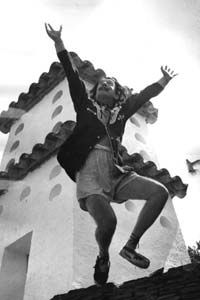Next to Pablo Picasso and Andy Warhol, perhaps the most famous and recognizable 20th century Modern artist was a diminutive, seriously disabled Mexican woman whose own dark, brooding visage, crowned by a single, feral-looking eyebrow, was frequently the subject of her paintings.
Magdalena Carmen Frida Kahlo y Calderón, known to the world as Frida Kahlo, lived just 47 years, from 1907 to 1954, and spent much of it in excruciating pain, both from polio and the effects of a 1925 bus accident. Her injuries necessitated dozens of operations on her back, leg and foot, and forced her to spend months at a time in bed, confined in a body cast. But those extreme physical problems didn't prevent her from making art. To the contrary, Kahlo used her physical and emotional torment as raw material for her paintings, which fused elements of the European Realist, Symbolist and Surrealist movements with the vibrant colors and exotic style of indigenous Mexican art [source: Arizona State University].
Advertisement
Though Kahlo attracted relatively little attention or acclaim during her short lifetime, in the decades since her death, she has become an iconic artist. Her work is so prized by museums and collectors that her 1943 painting "Roots" fetched $5.6 million at Sotheby's in 2006 [source: Artknowledgenews.com]. Her now instantly recognizable face appears on T-shirts and coffee mugs, and "Fridamaniacs," as the critic Stephanie Mencimer has labeled them, have created more than 65,000 Web sites devoted to her work [source: PBS]. Selma Hayek portrayed her in a 2002 biopic that made $25 million at the box office and became the most successful art-related movie ever made [source: Puente]. In 2001, she became the first Hispanic woman to be depicted on a U.S. stamp.
How and why has Frida Kahlo become such an object of widespread fascination? In this article, we'll discuss the innovative style, disturbingly provocative imagery and dark, irony-drenched humor that makes her work so compelling. But first, let's look at her life story, which was as colorful and tempestuous as her art.
Advertisement

